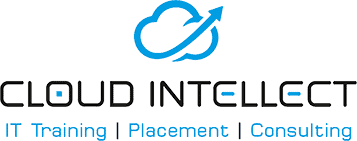
Salesforce has completely changed the way businesses manage their customer relationships. The Lightning Component Library is one of the most powerful tools in Salesforce’s arsenal. Understanding its significance, usage, and benefits can help organizations leverage Salesforce to its fullest potential.
In this detailed blog post, we will explore the Salesforce Lightning Component Library, why it is used, the tools to develop Lightning components, the top Lightning components available, and the top nine benefits of using the Salesforce Lightning Component Library.
What is Salesforce Lightning Component Library?
The Salesforce Lightning Component Library is a comprehensive repository of reusable components designed to enhance the development of applications on the Salesforce platform. These components are built using the Lightning framework, a modern user interface (UI) technology that offers a dynamic and responsive experience for Salesforce users. The library includes standard components provided by Salesforce and custom components created by developers, enabling a modular and efficient approach to application development.
The Lightning Component Library is central to the Salesforce Lightning Experience, providing the building blocks for creating sophisticated, user-friendly applications. It supports the creation of both Lightning web components (LWC) and Aura components, catering to different development needs and preferences.
Why is the Salesforce Lightning Component Library Used?
The Salesforce Lightning Component Library is used for several key reasons:
1. Enhanced User Experience: It enables developers to create highly interactive and responsive user interfaces, boosting the overall user experience on the Salesforce platform.
2. Reusability: The library’s components can be reused across multiple applications and pages, reducing development time and effort.
3. Modularity: By breaking down complex applications into smaller, manageable components, developers can maintain and update applications more efficiently.
4. Customization: enables developers to customize standard components and create new ones tailored to specific business needs, providing a personalized user experience.
5. Performance: The Lightning framework ensures high performance and fast load times, which are crucial for maintaining productivity and user satisfaction.
6. Scalability: Applications built using the Lightning Component Library can easily upscale to accommodate growing business needs and user demands.
The Tools to Develop Lightning Components
Developing Lightning components involves using various tools designed to streamline the process and enhance productivity. Here are some of the essential tools:
1. Salesforce Developer Console: This integrated development environment (IDE) allows developers to write, debug, and test their code directly within Salesforce. It provides a robust set of features for developing both Lightning web components and Aura components.
2. Salesforce CLI (Command Line Interface): is an effective tool for streamlining development processes. It increases the efficiency of the development process by allowing developers to create, test, and deploy components using command- line instructions.
3. Visual Studio Code with Salesforce Extensions: Visual Studio Code, coupled with Salesforce extensions, provides a versatile and robust IDE for developing Lightning components. It offers features like syntax highlighting, code completion, and debugging tools.
4. Lightning App Builder: is a drag-and-drop interface that enables developers and administrators to create and customize pages using Lightning components without writing code. It’s particularly useful for quickly assembling and deploying applications.
5. Salesforce Lightning Design System (SLDS): A comprehensive library of design guidelines and CSS components that ensure consistent styling and user experience across Salesforce applications. It helps developers create visually appealing and user-friendly interfaces.
The Top Lightning Components
The Salesforce Lightning Component Library includes many components designed to address specific needs and enhance functionality. Here are some of the top Lightning components:
1. Lightning Data Table: This tool provides a flexible and customizable way to display tabular data with sorting, searching, and pagination features.
2. Lightning Record Form: This form simplifies record creation and editing by providing a pre-built layout with fields, buttons, and validation rules.
3. Lightning Flow: Integrates with Salesforce Flow to create guided, multi-step processes that automate complex business workflows.
4. Lightning Card: This versatile component displays content in a card layout, and it is often used for dashboards and summaries.
5. Lightning Button: A customizable button component that can be styled and configured for various actions and interactions.
6. Lightning Input: is a collection of input components, such as text fields, checkboxes, and radio buttons, used to capture user data.
7. Lightning Spinner: A visual indicator that shows loading or processing states, enhancing the user experience by providing feedback during long operations.
8. Lightning Modal: A modal dialog component for displaying content in a pop-up window, often used for confirmations and alerts.
9. Lightning Tabs: A tabbed interface component organizes content into separate tabs, improving navigation and user experience.
The Top 9 Benefits of Salesforce Lightning Component Library
The Salesforce Lightning Component Library has several advantages that can greatly improve user experience and development on the Salesforce platform. These are the leading nine advantages:
1. Increased Productivity
Instead of starting from scratch every time, developers can concentrate on crafting particular functionalities by utilizing pre-built components. As a result, productivity rises, and the development process is accelerated.
2. Consistent User Experience
The Lightning Component Library ensures a consistent look and feel across applications, which is crucial for user adoption and satisfaction. It adheres to Salesforce’s design principles, providing a seamless user experience.
3. Faster Time to Market
Lightning components’ modular nature allows for rapid application development and deployment. Businesses can quickly respond to market demands and stay ahead of the competition.
4. Ease of Maintenance
Updates and maintenance are simpler for modular components. Developers can increase productivity and decrease downtime by altering specific parts without affecting the program.
5. Customization and Flexibility
The library offers a large selection of components that can be tailored to certain business requirements. This adaptability guarantees that apps are customized to the company’s specific needs.
6. Enhanced Performance
Lightning components are designed for optimal performance, with fast load times and smooth interactions. This improves user satisfaction and productivity, especially for complex applications.
7. Scalability
Applications built using the Lightning Component Library can easily scale to accommodate growing user bases and business needs, which is important for businesses that wish to grow.
8. Improved Collaboration
Standard components and development tools foster collaboration among developers, administrators, and business users, ensuring that applications meet both technical and business requirements.
9. Future-Proof Technology
Salesforce continuously updates the Lightning framework and Component Library to incorporate the latest technological advancements and best practices. This ensures that applications remain up-to-date and compatible with future Salesforce releases.
The Salesforce Lightning Component Library is a powerful tool that significantly enhances the development and user experience on the Salesforce platform. Organizations can build robust, scalable, and high-performing applications that meet their unique business needs by leveraging its reusable components.
The benefits of using the Lightning Component Library are manifold, including increased productivity, faster time to market, ease of maintenance, and enhanced performance. By understanding and utilizing this comprehensive library, businesses can unlock Salesforce’s full potential and drive success in their customer relationship management efforts.
Whether you are a developer looking to streamline your workflow or a business aiming to provide a superior user experience, the Salesforce Lightning Component Library is an invaluable resource that can help you achieve your goals.

